الضفة الغربية: عزيزة نوفل
في مركز إيواء في بلدة كفر اللّبد التي لا تبعد عن مخيمه سوى دقائق، يقضي وليد الشيخ موسى وعائلته المكونة من ثمانية أفراد، أيام النزوح التي قاربت على أربعة أشهر. انقلبت تفاصيل حياته رأسا على عقب واختفت خصوصية حياة العائلة في حيز مشترك مع أكثر من عشر عائلات.
هذا المصير تخيله وليد أكثر من مرة، وهو الذي كان منزله في مرمى الاحتياجات الإسرائيلية المتكررة على مخيم طولكرم شمال الضفة الغربية، والتي كان أطولها في ذلك الحين في نهاية آب/أغسطس الفائت، حيث استمر عشرة أيام متواصلة.
في ذلك الاقتحام تعرض المخيم لتدمير كبير قطعت الجرافات الإسرائيلية كل شبكات المياه والكهرباء، وجرفت الشوارع بالكامل. ولم ينته العدوان بانسحاب القوات الإسرائيلية من المخيم وإنما امتدت أثاره قرابة الشهرين بعدها، في ظل تقاعس المسؤولين وكالة غوث وتشغيل اللاجئين الأونروا والسلطة الفلسطينية عن أداء مسؤوليتها في التخفيف من هذه الآثار رغم وعودها المتكررة.
وضع المخيم بعد اجتياح آب/أغسطس وحتى أكتوبر
زرنا وليد وعائلته بعد انسحاب القوات الإسرائيلية من المخيم مباشرة. وعدنا مرة أخرى بعد عشر أيام، ثم بعد شهر وشهرين. في المرة الأولى كان منزله بلا مياه ولا كهرباء، والطريق مدمرة كليا وكان يحاول تأمين ما عائلته من المياه بشرائها عبر الصهاريج التي تنقلها من خارج المخيم. في الزيارة الثانية لم يكن شيئا قد تغير سوى تكدس مزيد من الأتربة والنفايات أمام المنزل:” هذا الخزان يحتوي على بقايا مواد كيماوية ولكن لا يوجد لدي خيارات أخرى” قال لنا. في الزيارة الثالثة أيضا، لم يتغير شيئا
لماذا كل هذا التأخير في إصلاح الطرق وشبكات المياه، يقول:” هناك لجان تحصي الأضرار، وعدتنا بتعويضات يمكن أن نتلقاها قريبا مع عودة المياه النظيفة ولا زلنا ننتظر”.
بعد شهر كان كل شيء قد تغير إلى الأسوأ، فمياه الأمطار زادت “الطين بله” حرفيا، وقد اختلطت مع مياه المجاري في حفر كبير في الشوارع. في هذه الزيارة حدثنا عن أمراض بدأت تظهر أعراضها على صغيراته (أيلين ونجاح)، تشخيص الأطباء كان فيروسات نتيجة التلوث، وسط خوفه على زوجته الحامل في شهرها السابع.
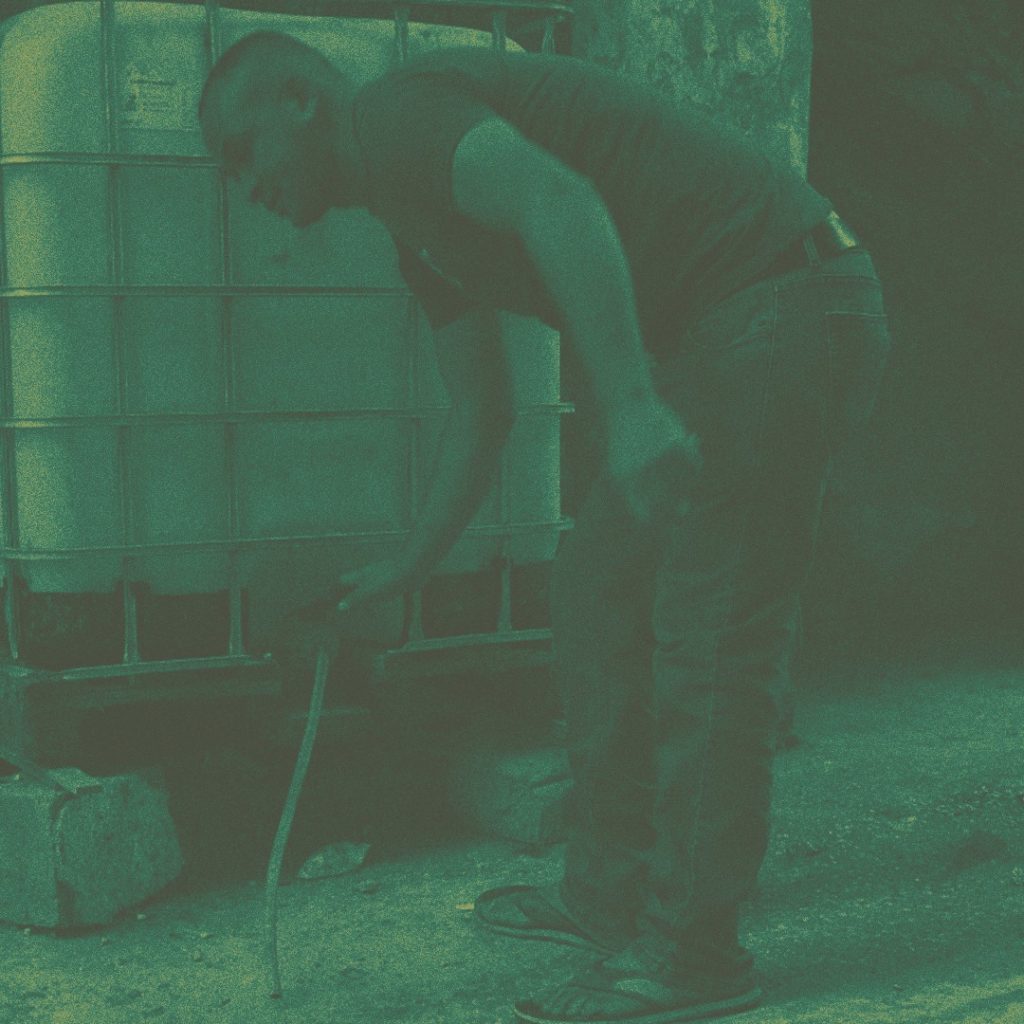

حتى ذلك الحين كانت طلبات العائلة بسيطة، ترميم حائط المنزل الذي هدم، إصلاح الشوارع والأزقة، طمر حفر المياه المتجمعة، وإصلاح خط المياه لتتمكن عائلته شرب مياه صالحة وغير ملوثة في ظل عدم قدرته على شراء مياه نظيفة للشرب.
كان يكرر “نحن وحيدون في هذه المعاناة”، وسط تخوف أكبر حول مصير عائلته:”في حال كررت إسرائيل ما فعلته في غزة هنا”. قبل أن ننقل هذه المخاوف في نص مكتوب كانت القوات الإسرائيلية قد نفذت اجتياحها الكبير المتوقع ضمن الحملة العسكرية التي أطلقت عليها السور الحديدي والمستمرة منذ 21 يناير/ كانون ثاني على ثلاث مخيمات في الضفة الغربية جنين وطولكرم ونور شمس.
بحثنا عن عائلة الشيخ موسى ضمن أكثر من 20 ألف نازح عن مخيم طولكرم، كان قد نزح إلى مدرسة ومنها إلى مركز الإيواء الحالي، حيث استقبل هناك طفلته “حلا” في ظروف غير إنسانية” كما قال لنا، ويجدد مطالبه بكثير من خيبة الأمل:”السلطة لا تستطيع وقف العدوان الإسرائيلي على المخيمات، لكنها تستطيع مساعدتنا أكثر لتخفيف هذا العبء”.
وليد الشيخ موسى: يسكن في مركز الإيواء رفقة عشر عائلات أخرى
ليس فقط وليد وعائلته، فعلى مدار الأشهر الثلاثة الأولى -حتى نهاية ديسمبر/ كانون أول- من عملنا على إنجاز هذا التقرير، وثقنا حكايات عشرات العائلات من المخيمات الثلاثة التي عانت معاناة مكررة مع الاجتياحات الإسرائيلية التي كانت أصعبها النزوح الأخير عن بيوتها.
قبل السابع من أكتوبر..
المتابع لحال هذه المخيمات لا يخفى عليه أن بوادر الأزمة أكبر من السابع من أكتوبر- بدء الحرب على القطاع- فالحرب الإسرائيلية على مخيمات الضفة وتحديدا الثلاثة المستهدفة من العملية العسكرية الأخيرة، بدأت قبل ذلك بأشهر، وتحديدا بعد العملية العسكرية على مخيم جنين في يوليو/ تموز 2023 واستمرت لثلاثة أيام دمرت الجرافات الإسرائيلية خلالها حارات كاملة وهجرت سكانها، في مشهد أعاد مشهد تدمير المخيم في أبريل/نيسان 2002.
في ذلك الحين زرنا عائله لحلوح في منزلها بشارع مهيوب والذي كان قد تعرض للهدم الجزئي، كانت العائلة قد أغلقت النوافذ بالبلاستيك، فتكلفة استبدال نوافذ البيت التي حطمها رصاص جنود الاحتلال أكثر مما تستطيع تحمله.
توالت الاجتياحات بعد السابع من أكتوبر/ تشرين أول وفي كل مرة منزل العائلة في محيط الاستهداف، تتراكم الخسائر أكثر فأكثر حتى بات المنزل غير قابل للسكن بتقييم اللجنة الهندسية التي أفرزتها المحافظة ووكالة الأونروا.
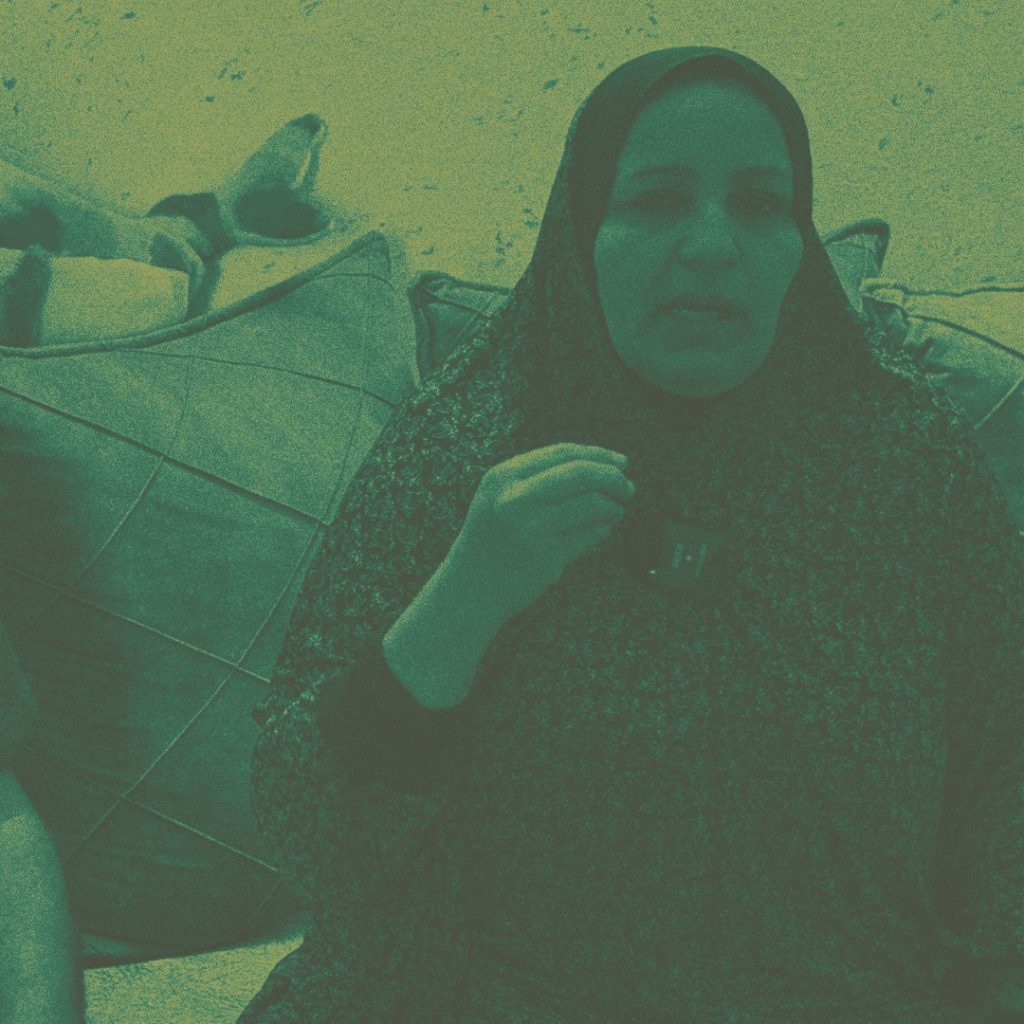
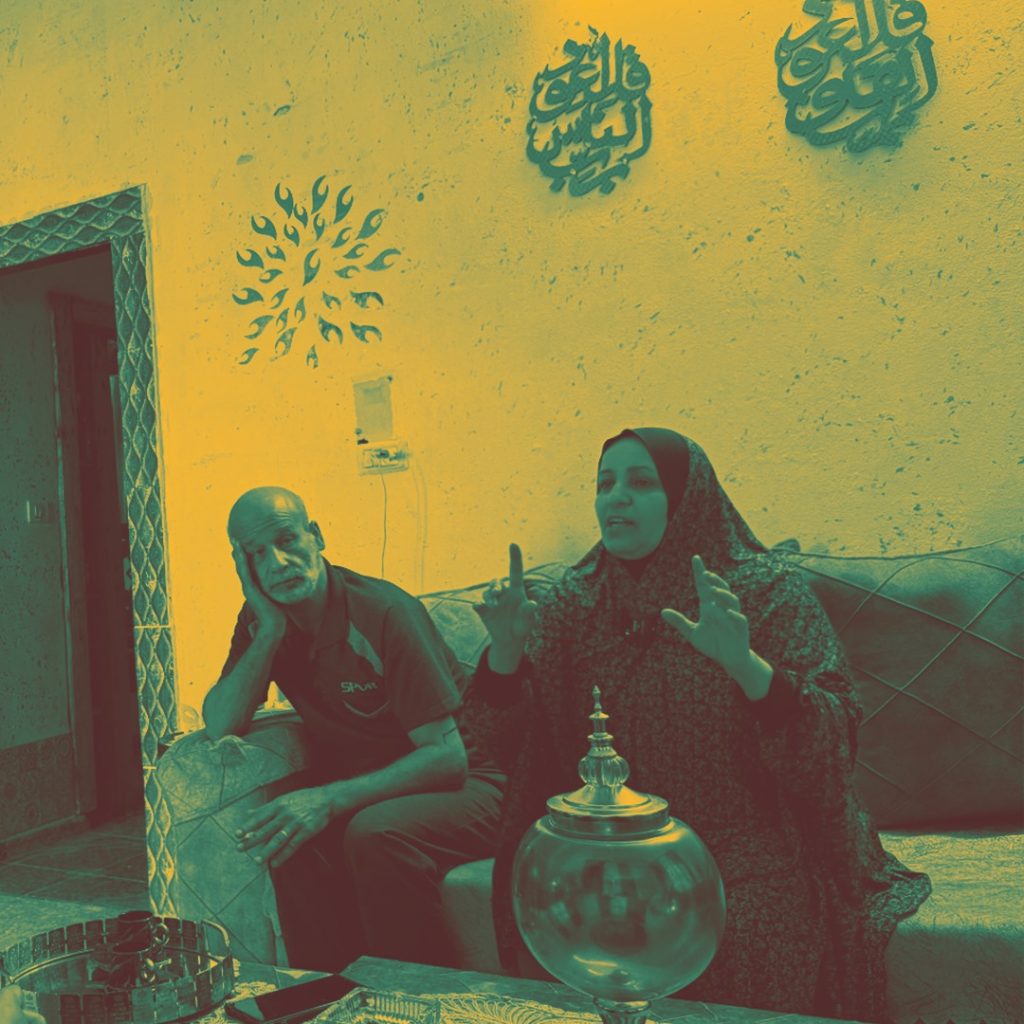
عندما زرنا العائلة في أكتوبر/تشرين أول الفائت كانت العائلة تعيش في المنزل بلا نوافذ ولا طريق صالحة للوصول إليه وأعمدة كهرباء تتدلى على مدخله.
تقول نظمية لحلوح:” كانت الخسائر جزئية حتى اجتياح أب/ أغسطس 2023 عندما فجر الاحتلال منزل ابني الملاصق لمنزلنا وتضرر بشكل كبير”. رغم الأضرار الكبيرة بقيت العائلة تسكن منزلها على “خرابه” فالأوضاع الاقتصادية للعائلة لا تسمح بدفع أجرة خارج المخيم، وقائمة الأونروا في تقدم المساعدات للاجئين التي دمرت منازلهم طويلة ولا أحد يعلم متى سيصل الدور على العائلة.
تقول لحلوح:” تقوم لجان الأونروا بحصر المتضررين في قوائم تحتاج لأشهر، خلال ذلك علينا تدبر أمورنا، وحتى هذه المساعدات لا تكفي لأكثر 3 شهور بعدها علينا أن نتدبر أمورنا”.
لم يتوقف الأمر عند تدمير المنازل، كان الردم لا يزال حول منطقة موبوءة بالزواحف والحشرات والقوارض. رغم كل ذلك كان هم العائلة إصلاح بيتها بشكل لا يجعله يقع عليها. تقول:”تكلفة استئجار منزل خارج المخيم مرتفعة، ما نسمعه عبر الأعلام من قبل المسؤولين مختلف عن الواقع”.
تضرب مثلا بسيطا وهو شراء مياه الشرب في ظل انقطاع وتلوث المياه، تقول: “قد يبدو شراء مياه للشرب أمرا بسيطا ولكن لعائلة مكونة من ست أفراد بلا دخل منتظم تصبح عبئا ثقيلا، مما يضطرنا للشرب من المياه الملوثة”. حاليا عائلة لحلوح كما كل سكان مخيم جنين، تسكن في مركز إيواء قريب، في ظروف مرقته لا أحد منهم يعلم أجلها.
خراب كبير في بيت نظمية لحلوح في مخيم جنين
وعلى مدار عامين تركزت العمليات العسكرية الإسرائيلية بالضفة الغربية في مخيمات نور شمس وطولكرم المقامة في مدينة طولكرم ومخيم جنين بجنين، الاحتلال يبرر هذه الاعتداءات بوجود مجموعات مقاومة مسلحة يسعى للقضاء عليها. بينما يذهب الفلسطينيين بالاعتقاد إلى أبعد من ذلك، وهو سعي إسرائيل لتدمير المخيمات لشطب حق عودة اللاجئين إلى بلادهم الأصلية التي هجروا منها عام 1948. هذا الحق الذي أقرته الأمم المتحدة من خلال قرار 194..
ويسكن المخيمات الثلاثة بحسب الأونروا أكثر من 65 ألف لاجئ فلسطيني، نزح منهم خلال العدوان الأخيرة 45 ألف، وأكثر من خمسة آلاف آخرين من محيط هذه المخيمات.
بالأرقام تعرض مخيم جنين خلال العامين الفائتين إلى 152 عدوان واجتياح، بينما مخيمي طولكرم ونور شمس لحوالي 64 عدوان. بعضها استمرت لأيام اضطر السكان خلالها للنزوح عنها ليعودوا ليجدوا منازلهم مهدمة جزئيا أو كليا وهو ما يجعلهم يواجهون تبعات هذه الاقتحامات بتدخلات لا ترتقي للحد الأدنى من المتطلبات.
الحكومة أعلنت تشكيل اللجنة الوزارية للأعمال الطارئة تتابع أوضاع النازحين والمخيمات مع التأكيد المستمر على أن الأونروا هي الجهة الأممية المخوّلة بموجب قرار الجمعية العامة للأمم المتحدة رقم 302 بالعمل داخل أوساط اللاجئين والمخيمات، والمسؤولة عن تقديم الخدمات الإنسانية والإغاثية، بما في ذلك التدخلات الطارئة في ظل الأوضاع الراهنة.
وكان أبرز عناوين خطة الطوارئ الحكومية 2024 التي أقرتها لمواجهة هذه الاجتياحات وسيناريوهات أخرى متوقعة أن تنتقل حرب الإبادة من غزة إلى الضفة الغربية، معالجة آثار هجمة الاحتلال واعتبار موازنة 2024 موازنة طوارئ. إلا أن تطبيق هذه الخطة كما يقول النازحين بقيت حبرا على ورق.
عمليات نزوح كبيرة في مخيمات شمال الضفة
الحكومة تبيع الوهم..
وفي تصريحات سابقة لرئيس اللجنة الشعبية لمخيم جنين محمد الصباغ خلال اعتصام للنازحين من مخيم جنين في الجامعة العربية الأمريكية، في الأول من أبريل/ نيسان، طالب الحكومة الفلسطينية تدخلات أكثر جدية. وبحسبه فإن ما أنفقته حتى ذلك الحين لا يتعدى توفير مبلغ 500 شيكل ل 800 عائلة، أي بمقدار 8 شيكل لكل عائلة يوميا (حوالي دولارين).
وفي تقريرها الصادر في نهاية نيسان/أبريل الفائت قالت الحكومة إنها بالرغم من الأزمة المالية المستمرة الناتجة عن اقتطاع الاحتلال لأكثر من نصف قيمة المقاصة الشهرية- الذي يعتبر مصدر الميزانية الرئيسي للحكومة الفلسطينية- فقد خصصت خلال الأشهر الأربعة الأخيرة نحو 34 مليون شيكل ( حوالي 9.5 مليون دولار) لإعادة تأهيل البنية التحتية، هذا إلى جانب صرف 3.2 مليون شيكل ( 900 ألف دولار) كدفعات إسعافية للجان الطوارئ في محافظات شمال الضفة واللجان الشعبية.
كل هذه الإعلانات أعتبرها النازحين “حبرا على ورق للاستهلاك إعلامي لا مؤشرات على تحقيقه”، كما يقول الناشط من مخيم طولكرم حسين الشيخ علي.
وتابع:” بالنسبة لنا الوكالة والسلطة الفلسطينية من تتحملان المسؤولية، الوكالة كمؤسسة أممية يفترض أن تقوم بدورها، والسلطة كونها ممثل الشعب الفلسطيني في كل مكان، وقت الأزمات تتذرع بعدم وجود أموال”.
وبحسب الشيخ علي فإن السلطة وبعد أربعة أشهر من العملية العسكرية وتدمير المخيمات الثلاثة لم يتم إعلانها مناطق منكوبة من قبل الحكومة، وكل ذلك حتى لا تتحمل السلطة تبعات هذا الإعلان، وتساءل “إذا كانت السلطة عاجزة لماذا لا تحل نفسها في تلك المناطق”.
توافق الناشطة نهاية الجندي من مخيم نور شمس الشيخ علي، وتقول إنه وبعد عامين من تصريحات الحكومة عن الجهوزية وخطط الطوارئ، لم يكن لدى الحكومة ولا الأونروا ولا حتى اللجان الشعبية للمخيمات برنامج للتعامل مع الأزمة، وقابلت كل ذلك تخبط كبير.
وتابعت الجندي:” حتى الأن نعيش تخبط وفوضى، لا يوجد خطط اجتماعية، اقتصادية، صحية، تعليمية ولا تصور لاستيعاب العمال بالحد الأدنى. لا يعقل أن يترك 50 ألف نازح لمصيرهم بينما بقية مناطق الضفة تعيش حياة عادية”.
انتقاد الحكومة والأونروا على تعاملها مع أزمة المخيمات الحالية لا يقف حد الواقع الحالي ل50 ألف نازح في مراكز الإيواء بلا خدمات، وإنما تعدتها إلى مستقبلهم بعد انتهاء هذه الحملة. فإذا كانت الحكومة حاليا عاجزة عن القيام دورها الإغاثي فكيف ستتمكن من إعادة إعمار هذه المخيمات وعودة النازحين إلى بيوتهم، أو بالحد الأدنى تأمين سكنات بديلة لهم.
يقول أحمد حواشين أحد النازحين من مخيم جنين، إن كل ما وصلهم حتى الآن من مساعدات كان مصدرها الرئيسي المؤسسات المجتمعية والنشطاء، ورغم إنه وعائلته كانوا من المحظوظين الذين نزحوا إلى سكنات الجامعة الأمريكية القريبة من المخيم وليس في مراكز إيواء مشتركة.
وتابع:” الخوف الكبير لدينا الآن هو اليوم الثاني من انتهاء العدوان على المخيمات، ماذا سيكون مصيرنا إلى أين سنذهب والمخيم مدمر بالكامل، والتدخلات الرسمية على هذا الشكل”.
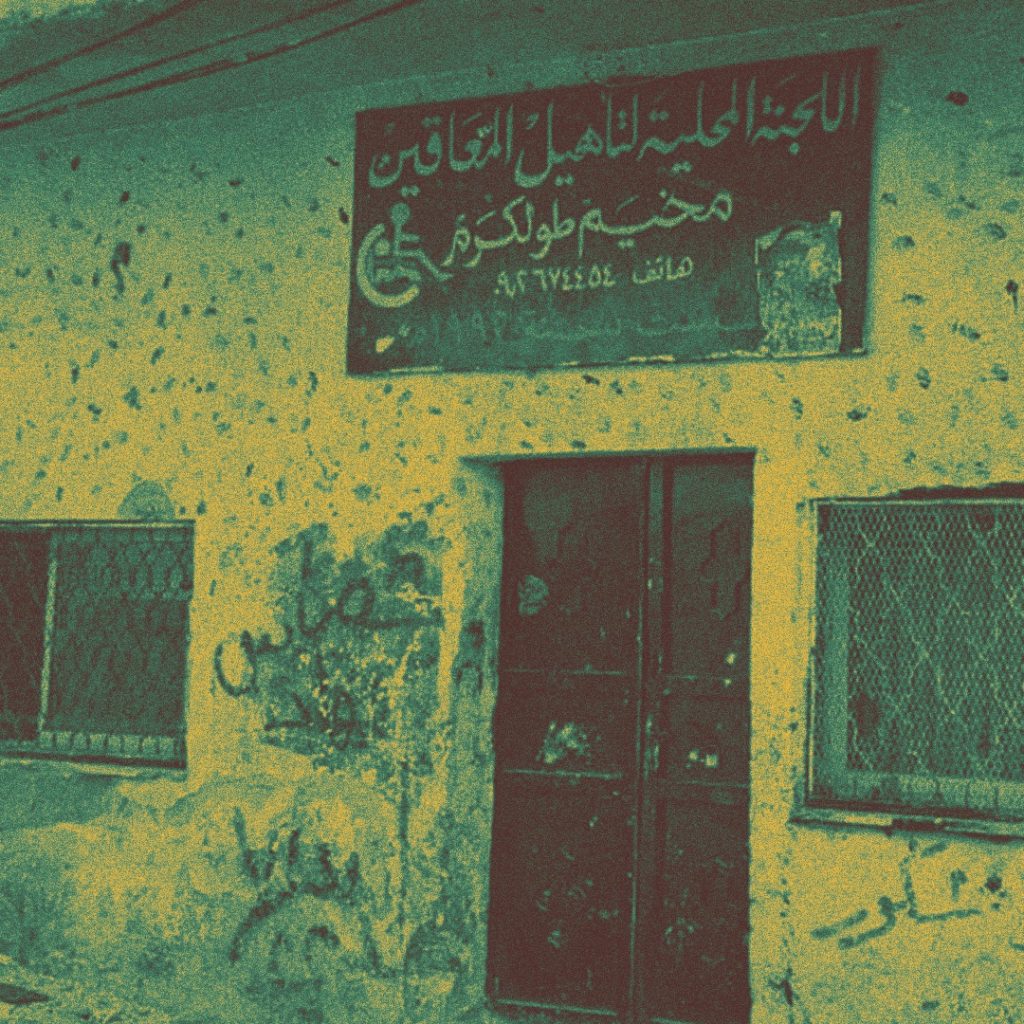
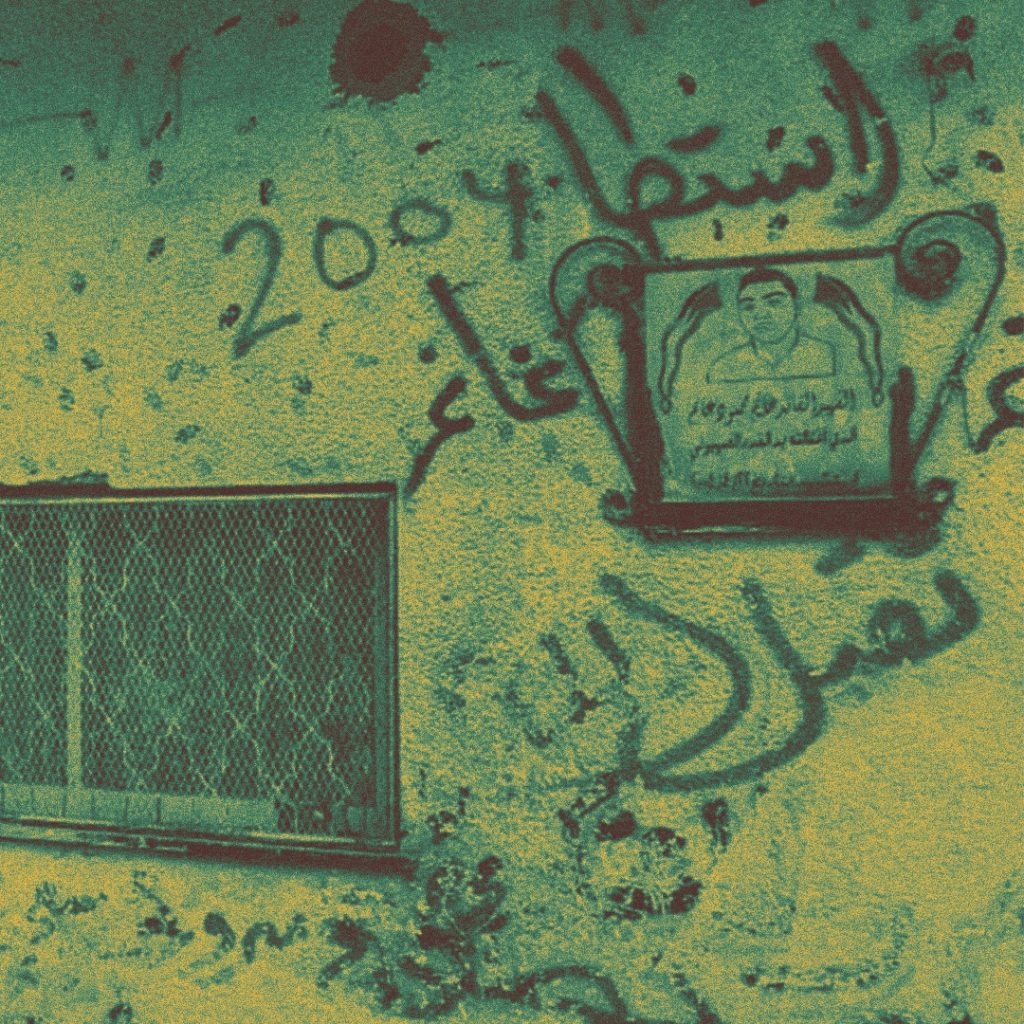
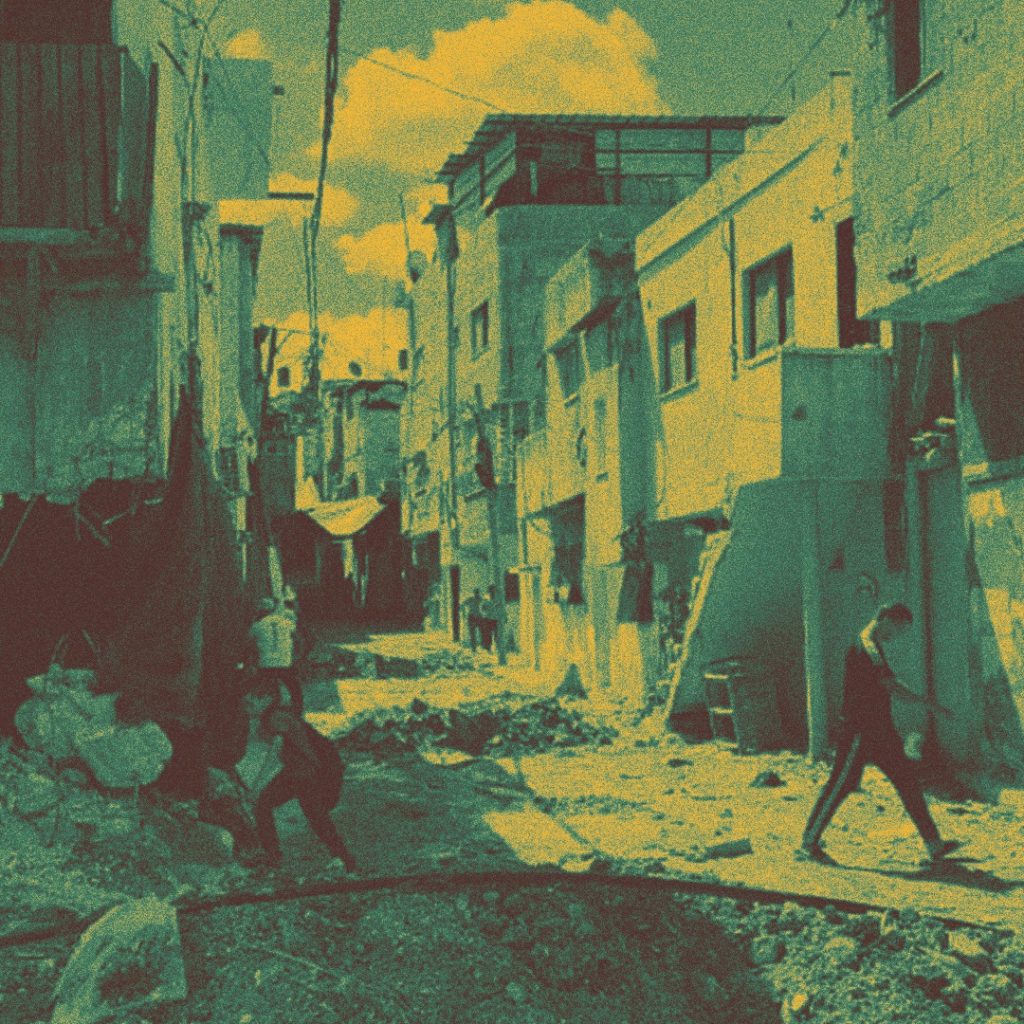
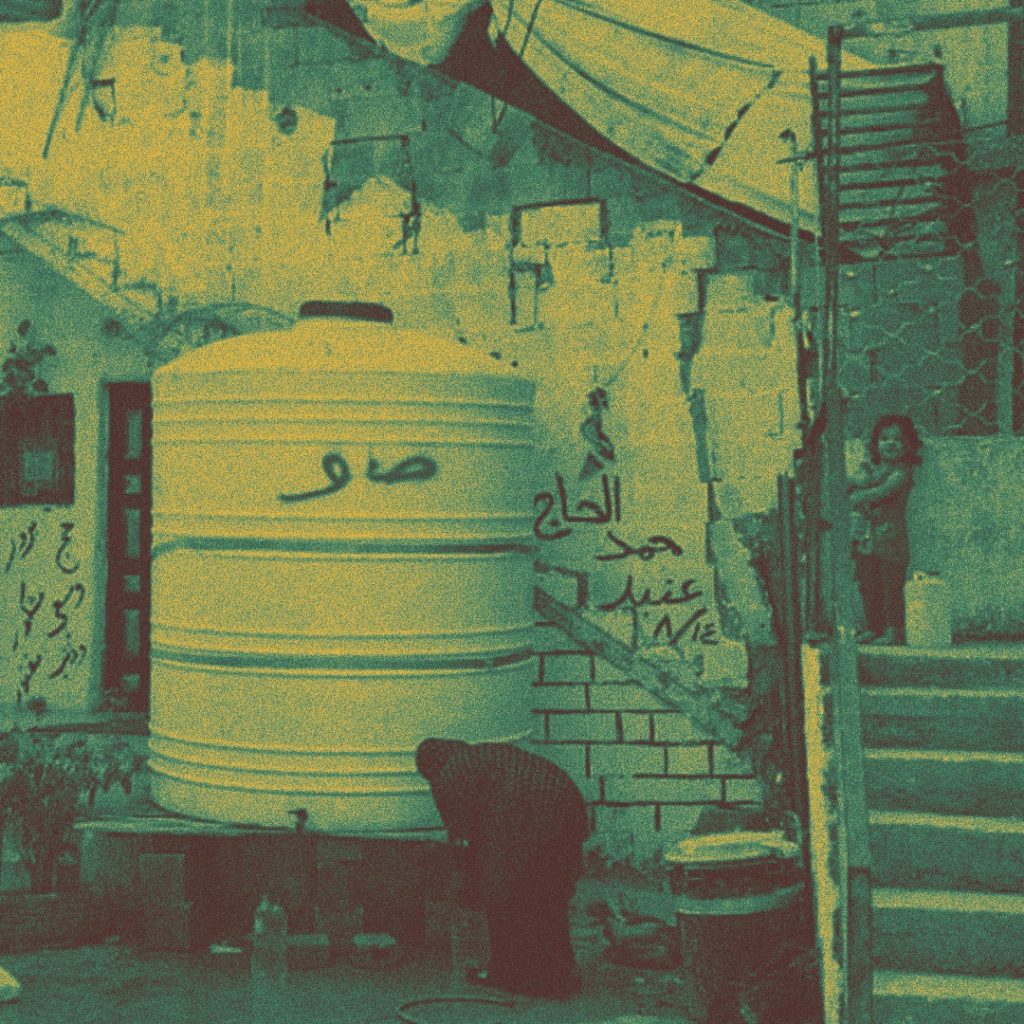
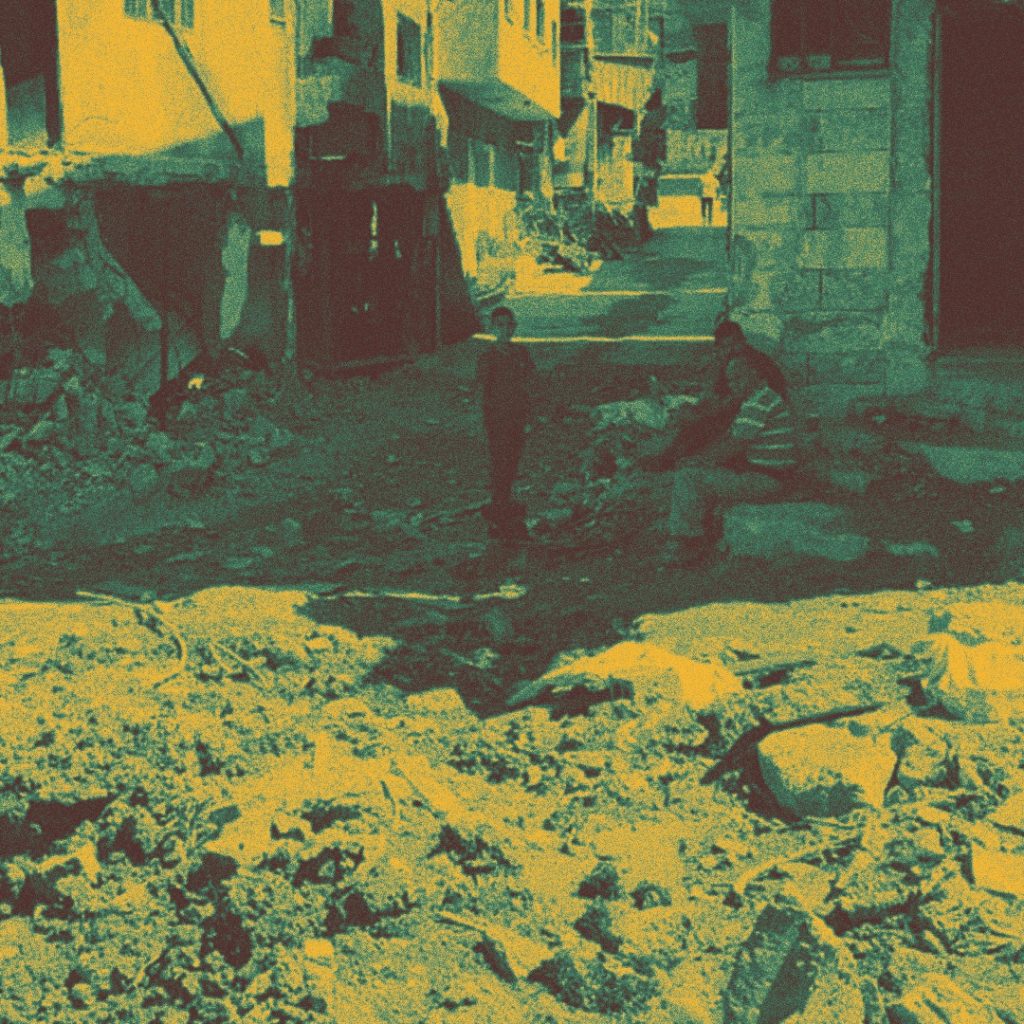
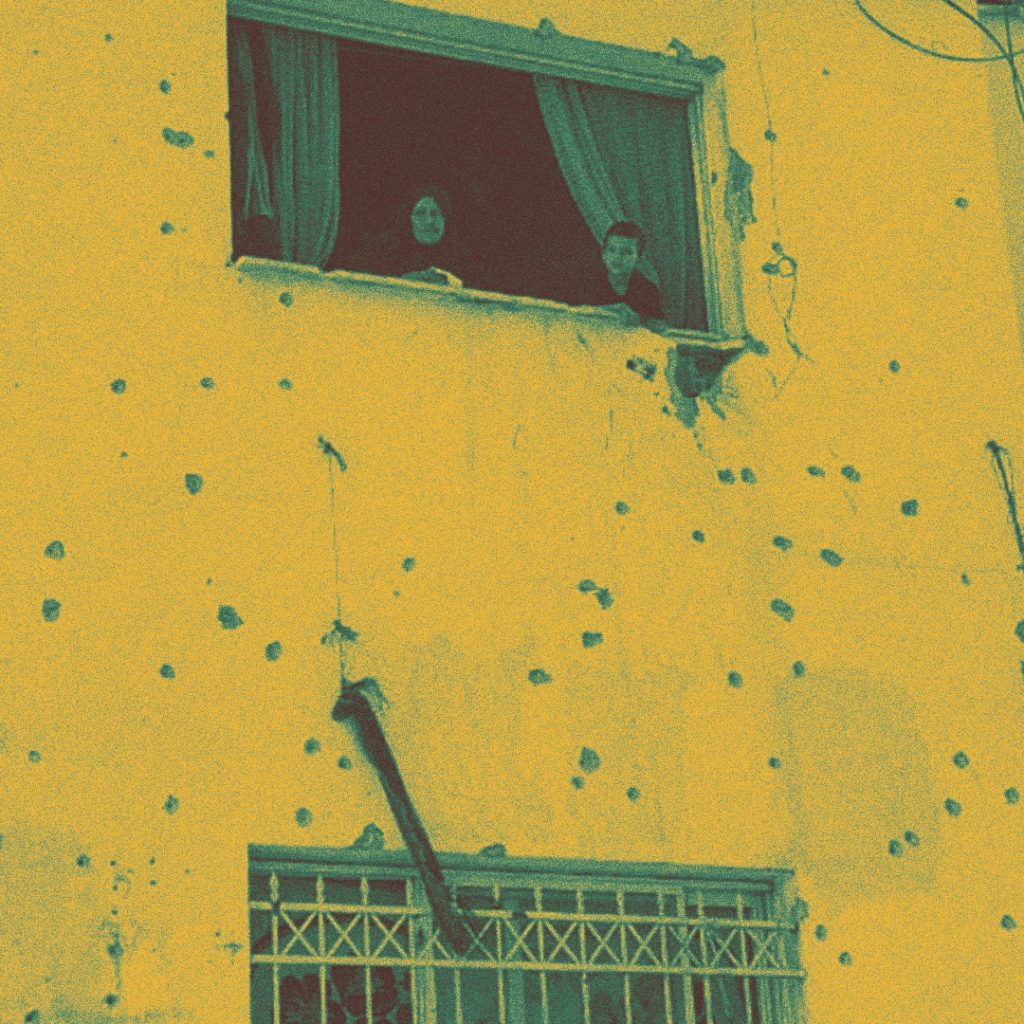
ولكن ما المطلوب من الحكومة الفلسطينية والسلطة والأونروا؟
بحسب الأمم المتحدة فإن مسؤولية اللاجئين في المخيمات الفلسطينية تقع على عاتق الأونروا التي تأسست بموجب قرار الجمعية العامة للأمم المتحدة رقم 302 عام 1949 تطورت مهام ولاية الوكالة على مر السنين، لتمتد إلى توفير خدمات الطوارئ في منطقة عملياتها. وتقدم الأونروا المساعدة الإنسانية والخدمات الأساسية للاجئين في مجالات التعليم الأساسي والرعاية الصحية الأولية ورعاية الصحة العقلية والإغاثة والخدمات الاجتماعية والقروض الصغيرة والمساعدة الطارئة.
فيما عدا هذه المجالات، تتبع المخيمات إلى الدول المضيفة، والتي أصبحت السلطة الفلسطينية بعد تأسيسها واحدة منها. ورغم هذه السلطة إلا أن العلاقة بين السلطة ولاجئي مخيمات الضفة الغربية وغزة لها خصوصيتها.
فبحسب القانون الأساسي الفلسطيني فإن “للفلسطيني الذي هُجِّر من فلسطين أو نزح عنها نتيجة لحرب عام 1948 ومنع من العودة إليها، حق العودة إلى الدولة الفلسطينية وحمل جنسيتها”.
الباحث نهاد أبو غوشة يقول إنه بحسب القانون الأساسي فإن الشعب الفلسطيني في كل مناطق تواجده مسؤولية السلطة ومنظمة التحرير الفلسطينية وعليها أن تتحمل معالجة أزمات شعبها، وهذا لا يلغي مسؤولية الأونروا أو أي منظمة أممية أخرى، فالأدوار هنا تكاملية.
وتابع:” السلطة الفلسطينية تتلقى مساعدات دولية باسم اللاجئين و تجبي ضرائب منهم، فجوهر التفويض الممنوح لها لقيادة الشعب الفلسطيني بما فيهم اللاجئين يقوم على هذه المسؤولية. حتى وأن كانت السلطة ضعيفة ماليا، عليها أن تجد الحلول”.
حملنا هذه المطالبات إلى رئيس دائرة شؤون اللاجئين أحمد أبو هولي والذي رفض محاسبة وكالة الأونروا على أي تقصير في ظل كل التحديات التي تمر بها ومحاولات إسرائيل إنهاء عملها، إلى جانب الازمة المالية التي تمر بها بعد قطع المساعدات التي تقدمها بعض الدول لها وفي مقدمتها المساعدات الأمريكية، وأكد:” على المجتمع الدولي الدعم المادي للوكالة لخدمة اللاجئين ومن يتحمل المسؤولية على عدم قدرتها القيام بواجباتها هو الاحتلال”.
إذا ماذا عن الحكومة والسلطة ودائرة اللاجئين ودورها؟ أجاب أن دور وعمل السلطة هو إسنادي للأونروا وليس بديلا عنها، مشيرا إلى وجود خطة حكومية بالتعاون مع دائرة اللاجئين في المنظمة أبرز عناوينها الإيواء والإغاثة وتأمين مبالغ مالية كمساعدات عاجلة بالتنسيق مع الأونروا.
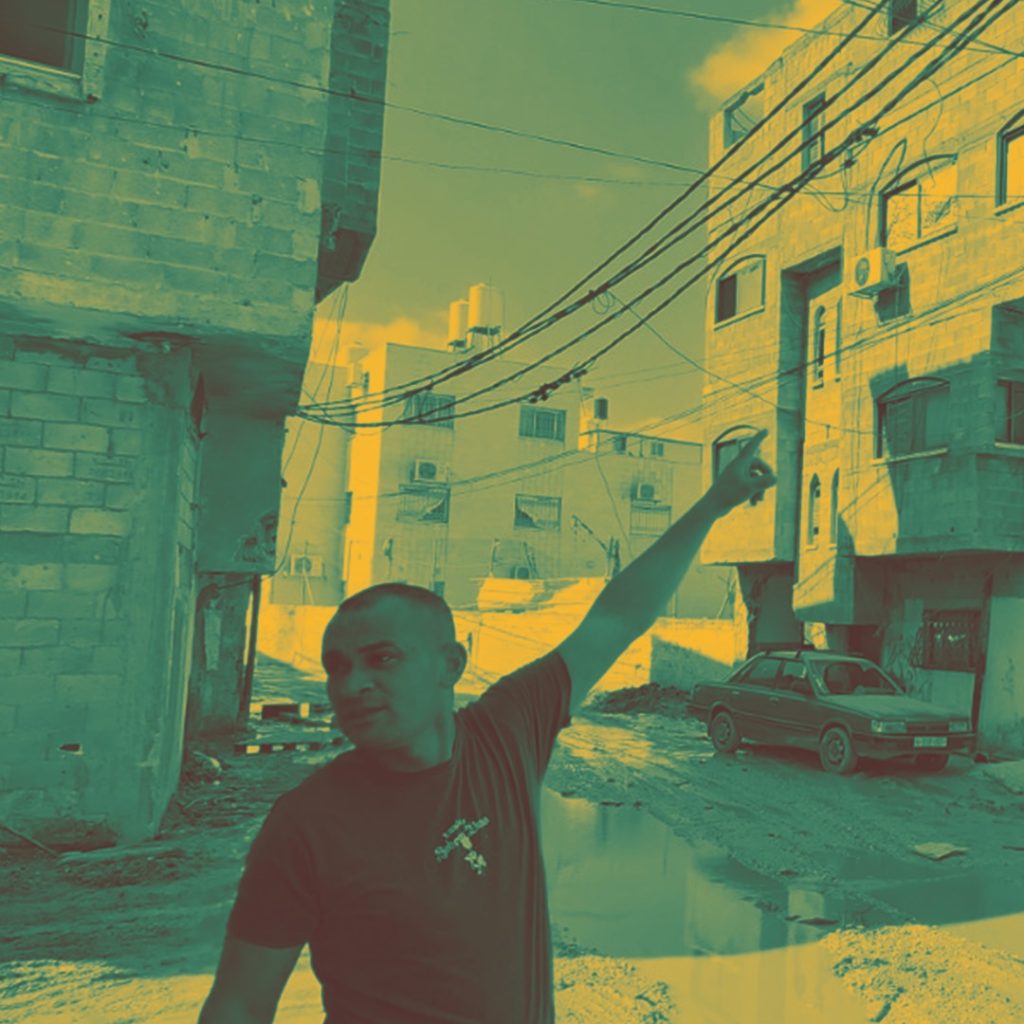





ولكن هل هذه الخطوات كافية في ظل الحاجة الكبيرة ونزوح أكثر من 45 ألف لاجئ عن المخيمات، بما يعادل 8 آلاف عائلة؟
يجيب المدير التنفيذي لمركز بيسان للبحوث والإنماء أُبي العبودي، ” لا”، فالحملة التي تقوم بها إسرائيل في المخيمات هي حملة سياسية الهدف منها محاربة الأونروا وحق العودة، لذا يجب أن يكون الرد بإجراءات سياسية وألا يقتصر الأمر على محاولات إيجاد حلول إغاثية.
وتابع:” هذا الرد غير موجود، حتى قرارات المركز المجلس المركزي التي اتخذت من سنوات والتي تتعلق بالاتفاقيات والاعتراف بإسرائيل ووقف التنسيق الأمني معها لم يتم تطبيقها”. ويرى العابودي أن الهجوم على الأونروا كهجوم على حق العودة يجب ان يقابل بتعليق عضوية إسرائيل في الأمم المتحدة
*لم يكن من الممكن إنجاز هذا التقرير لولا الدعم الذي قدمه برنامج زمالة جيم هوج للتقارير من المركز الدولي للصحفيين.
“On our own..”
Shy aids from the Palestinian Authorities and UNRWA to the refugee camps
West Bank: Aziza Nofal
The displacement of Waleed Alsheikh Musa and his 8 family members turned their life upside down. It’s been four months since they have arrived at Kafr alLabad housing shelter where the family lost every aspect of their privacy. As they are sharing the existing space with more than 10 other families.
Waleed imagined this scenario quite often. His house was targeted many times during the Israeli invasions of Tulkarem refugee camp in the West Bank. The longest invasion back then was at the end of August which lasted for 10 days.
During the invasion, water and electricity lines were cut off by Israeli bulldozers and streets were completely destroyed. The aftermath of this assault continued for two months after Israeli forces retreated. Especially due to the reluctance of Palestinian Authorities and UNRWA officials to reduce the effect of this invasion despite their promises.
We visited Waleed and his family after Israeli forces retreated from the camp immediately. We came back 10 days later, a month later and two months after. The first time there was no water or electricity in the house and the road was completely destroyed. Waleed was trying to provide water for his family through buying water tanks from outside of the camp. In the second visit nothing has changed except for the piles of dirt and garbage in front of the house. He said : “This tank has chemical remains but I have no other choice” In the Third visit nothing changed.
Why is repairing the roads and water lines delayed? He says: “there are committees that count the damages. They promised us compensation for clean water. They told us we might receive them soon but we are still waiting”.
Everything became worse after a month because rain water literally “added insult to injury” after it blended with sewer water and collected in large craters in the streets. During this visit, Waleed told us that his little daughters were developing symptoms of diseases which the doctor diagnosed as virus infection caused by pollution. He was also worried about the health of his wife who was seven months pregnant.
The demands of this family were simple. All they wanted was to repair the wall of the house that was destroyed, to repair the streets and alleys, to dump water holes and to repair the water lines. This way his family is able to drink clean water because he is unable to buy clean drinking water.
He kept repeating: ” we are on our own in this suffering”. He was worried about the future of his family and especially if Israel decides to do what it’s doing in Gaza in the West Bank”. before we were able to write all those fears in words, the Israeli forces invaided three refugee camps which included Jenin, Tulkarem, and Noor Shams in the West Bank since the 21st of january and they called this invasion “Iron Wall”
We searched for Waleed among more than 20,000 refugees in Tulkarem. He seeked refuge in a school and then in the current housing shelter were his daughter ” Hala” was born in “inhuman conditions” as he said . He repeated his demands with great disappointment as he said: ” The Palestinian Authority couldn’t stop the Israeli assault on camps, but it can help us reduce this heavy burden”.
Waleed and his family weren’t the only ones suffering. Since the end of December and over the first Three months of making this report, we documented many cases in the Three refugee camps which were frequently invaded by Israeli forces. The last invasion was the hardest because people had to heave their houses.
Before the 7th of October..
For observers of the situation in the refugee camps, it wasn’t hard to see early signs of a bigger crisis than the 7th of October. The Israeli war against refugee camps in the West Bank began and especially in the Three targeted refugee camps in the last military operation months before the war on Gaza. Especially after the military operation in Jenin in July 2023 which lasted for Three days. During this operation Israeli bulldozers destroyed whole neighbourhoods and displaced the residents. The scene was similar to what happened in the camp in April 2002.
We visited the family of Lahlooh in their house where the huge street was partially destroyed. The family had wrapped their windows in plastic because they couldn’t afford replacing the glass after it was shattered from Israeli bullets.
One invasion after another started happening after the 7th of October and it always happens near the family’s house. This caused more damage to the house each time until it became uninhabitable according to the engineering committee of UNRWA and the governorate.
Last October when we visited the family living in that house we found out that the family was living without glass windows or even proper roads to reach the house and also power poles were hanging on the entrance.
“The losses were partial until the August 2023 invasion, when the occupation forces blew up my son’s house, which was adjacent to ours, and it was severely damaged,” says Nazmiya Lahlouh. Despite the extensive damage, the family continued to live in their “ruined” home. The family’s financially unable to pay rent outside the camp. UNRWA’s list of aid providers to refugees whose homes were destroyed is long, and no one knows when the family’s turn will come.
Lahlooh says, ” the process of UNRWA committees putting the names of those affected on lists might take months. At the same time, we have to handle ourselves as the aid is only enough for three months then we have to handle things by ourselves.”
The destruction of homes didn’t stop there. The rubble was still there, leaving an area infested with reptiles, insects, and rodents. Despite all this, the family’s concern was to repair their home so it wouldn’t fall on them.
She says, “The cost of renting a house outside the camp is high. What we hear in the media from officials is different from the reality.”
She gives a simple example: purchasing drinking water amid water shortages and contamination. She says, “Buying drinking water may seem simple, but for a family of six without a regular income, it becomes a heavy burden, forcing us to drink contaminated water.” Currently, the Lahlouh family, like all residents of Jenin Camp, resides in a nearby shelter, whose fate is unknown.
Two years of targeting..
For two years, Israeli military operations in the West Bank have been concentrated in Nur Shams and Tulkarm refugee camps, located in Tulkarm, and the Jenin refugee camp in Jenin. The occupation justifies these attacks by chasing after armed resistance groups which it seeks to eliminate. Meanwhile, Palestinians believe Israel is seeking to destroy the camps to erase the refugees’ right of return to their original homeland, from which they were displaced in 1948. This right was recognized by the United Nations in Resolution 194.
According to UNRWA, the three camps are home to more than 65,000 Palestinian refugees, 45,000 of whom were displaced during the recent aggression, and more than five thousand others from the surrounding areas.
In figures, Jenin camp was subjected to 152 attacks and invasions over the past two years, while Tulkarm and Nur Shams camps were subjected to approximately 64 attacks. Some of these attacks lasted for days, forcing residents to flee, only to return and find their homes partially or completely destroyed. This leaves them facing the consequences of these raids, with interventions that fall far short of the minimum requirements.
The government announced the formation of a ministerial committee for emergency relief to monitor the conditions of the displaced and the camps, while continually emphasizing that UNRWA is the UN agency authorized by UN General Assembly Resolution 302 to operate within refugee communities and camps, and is responsible for providing humanitarian and relief services, including emergency interventions in light of the current situation.
The most prominent titles of the government’s 2024 emergency plan, which was approved to confront these incursions and other scenarios expected to see the war of genocide happening in Gaza to the West Bank, addressed the effects of the occupation’s offensive and designated the 2024 budget as an emergency budget. However, the implementation of this plan, according to the displaced, has remained a dead letter.
The government is giving false hopes..
In previous statements, Muhammad al-Sabbagh, head of the Jenin Camp Popular Committee , called on the Palestinian government to intervene more seriously during a protest by displaced people from Jenin Camp at the Arab American University on April 1. According to him, what it had spent so far did not exceed 500 shekels for 800 families which is equivalent to 8 shekels per family per day (approximately $2).
In its report issued at the end of last April, the government stated that despite the ongoing financial crisis resulting from the occupation’s deduction of more than half of the monthly clearance revenues—the Palestinian government’s main budget source—it had allocated approximately 34 million shekels (approximately $9.5 million) over the past four months for infrastructure rehabilitation. This was in addition to disbursing 3.2 million shekels (approximately $900,000) as emergency payments to emergency committees in the northern West Bank governorates and popular committees.
The displaced consider all these announcements “a dead letter for media consumption with no indications of their implementation,” says Hussein Sheikh Ali, an activist from Tulkarm camp.
He continued, “For us, UNRWA and the Palestinian Authority bear responsibility. UNRWA, as an international organization, is supposed to fulfill its role, while the PA, as the representative of the Palestinian people everywhere, uses the excuse of a lack of funds in times of crisis.”
According to Sheikh Ali, four months after the military operation and the destruction of the three camps, the PA did not yet announce them as areas of destruction by the government. This is all so that the PA does not bear the consequences of this declaration. He asked, “If the PA is incapable of helping, why isn’t it terminated in these areas?”
Activist Nihaya al-Jundi from Nur Shams agrees with al-Sheikh Ali, saying that after two years of the government statements about being prepared and the announcement of emergency plans, neither the government, UNRWA, nor even the camp’s popular committees have developed a program to address the crisis, and they have responded to all of this with great confusion.
Al-Jundi continued, “Until now, we are experiencing confusion and chaos. There are no social, economic, health, or educational plans, and no vision for absorbing even the minimum number of workers. It is unacceptable to leave 50,000 displaced people to their fate while the rest of the West Bank lives a normal life.”
The criticism of the government and UNRWA’s handling of the current camp crisis extends beyond the current reality of 50,000 displaced people in shelters without services. It also extends to their future after this campaign ends. If the government is currently unable to fulfill its relief role, how will it be able to rebuild these camps, return the displaced to their homes, or at the very least, provide them with alternative housing?
Ahmed Hawashin, a displaced person from Jenin camp, says that all the aid they have received so far has primarily come from community organizations and activists, even though he and his family were among the lucky ones who were displaced to the American University dormitories near the camp, rather than to shared shelters.
He continued, “Our greatest fear now is the second day after the end of the aggression on the camps. What will be our fate? Where will we go when the camp is completely destroyed and official interventions are taking place like this?”
But what is required of the Palestinian government, the Palestinian Authority, and UNRWA?
According to the United Nations, the responsibility for refugees in Palestinian camps falls to UNRWA, which was established by UN General Assembly Resolution 302 in 1949. The agency’s mandate has evolved over the years, extending to providing emergency services in its area of operation. UNRWA provides humanitarian assistance and essential services to refugees in the areas of basic education, primary health care, mental health care, relief and social services, microfinance, and emergency assistance.
Apart from these areas, the camps are under the jurisdiction of the host countries, of which the Palestinian Authority became one after its establishment. Despite this authority, the relationship between the Palestinian Authority and the refugees in the West Bank and Gaza camps is unique.
According to the Palestinian Basic Law, “A Palestinian who was displaced from Palestine or was forced to leave their home as a result of the 1948 war and was prevented from returning to, has the right to return to the State of Palestine and to bear its nationality.”
Researcher Nihad Abu Ghosheh says that according to the Basic Law, the PA and PLO are both responsible for addressing the crises facing the Palestinian people wherever they reside. This does not negate the responsibility of UNRWA or any other international organization, as their roles are complementary.
He continued: “The Palestinian Authority receives international aid on behalf of the refugees and collects taxes from them. The essence of the mandate granted to it to lead the Palestinian people, including the refugees, is based on this responsibility. Even if the Authority is financially weak, it must find solutions.”
We conveyed these demands to the head of the Department of Refugee Affairs, Ahmed Abu Holi, who refused to hold UNRWA accountable for any negligence in light of the challenges it faces and Israel’s attempts to end its work, in addition to the financial crisis it is experiencing after the aid provided by some countries, most notably the United States, was cut. He emphasized: “The international community must provide financial support to the agency to serve the refugees, and the one who bears responsibility for its inability to fulfill its duties is the occupation.”
So what about the government, the Authority, and the Department of Refugee Affairs, and their role? He responded that the role and work of the Palestinian Authority is to support UNRWA, not to replace it. He pointed out the existence of a government plan in cooperation with the organization’s refugee department, the most prominent of which are shelter, relief, and providing urgent financial aid in coordination with UNRWA.
But are these steps sufficient in light of the great need and the displacement of more than 45,000 refugees from the camps, equivalent to 8,000 families?
Ubai al-Aboudi, the Executive Director of the Bisan Center for Research and Development, responded, “No.” The campaign waged by Israel in the camps is a political campaign aimed at combating UNRWA and the right of return. Therefore, the response must be political measures and not limited to attempts to find relief solutions.
He continued, “This response does not exist. Even the decisions of the Central Council, taken years ago regarding agreements, recognition of Israel, and the cessation of security coordination with it, have not been implemented.” Al-Aboudi believes that the attack on UNRWA, as an attack on the right of return, must be met with the suspension of Israel’s membership in the United Nations.
This report would not have been possible without the support ofThis report from the Jim Hoge Reporting Fellowship from the International Center for Journalists.





